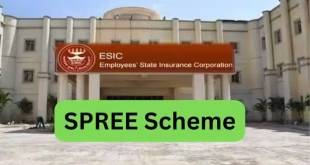- The original intent of the reservation policy in newly independent India was to level the playing field for the most marginalised sections, those stigmatised and discriminated against on account of their birth into specific caste and tribal groups.
- While these groups were also economically deprived, that was not the main rationale for instituting compensatory discrimination in favour of these groups.
- Over the decades, the instrument of reservation has expanded to include more groups under its ambit, leading to furious debates both about the general principle of affirmative action and about which groups deserve to be beneficiaries.
- These disputes have resulted in complex legal cases, with the rulings providing the nuts-and-bolts mechanics that guide the implementation of the reservation policy on the ground.
- This article draws attention to a crucial impending implementation decision about the economically weaker sections (EWS) quota, and shows how the sequence of implementation would result to diverging outcomes.
- The reservation system in India takes two forms: vertical reservation (VR), which until 2019 was defined for stigmatised and marginalised social groups (SCs, STs and OBCs); and horizontal reservation (HR), applicable to cross-cutting categories such as women, people with disability (PWD), domicile, etc.
- As long as the VR system was social group-based, no individual was eligible for multiple VR categories, since no individual can belong to multiple caste or tribal groups.
- The 103rd Constitution Amendment Act in 2019, popularly known as the 10% quota for the so-called EWS, fundamentally altered the original raison d’être of reservations by opening VR to groups that are not defined in terms of hereditary social group identity (caste or tribe).
- EWS status is transient (that individuals can fall into or escape out of), but social groups are permanent markers of identity.
- While this meant that in principle, an individual could belong to two VR categories (say, SC and EWS), the amendment explicitly removed individuals who are already eligible for one VR (SC, ST, or OBC) from the scope of EWS reservations.
- As a result of this exclusion, an individual could still be only eligible for at most one vertical category.
- Exclusion of SCs, STs, OBCs from the scope of EWS reservation was immediately challenged in court on the grounds that it violated individual right to equality (that roughly corresponds to Articles 14-18 of the Indian Constitution).
- On the last day of hearings at the Constitutional Bench of the Supreme Court, the following “compromise” proposal was made by G. Mohan Gopal: do not revoke the amendment but interpret the language of the amendment in a way that does not exclude SCs, STs, OBCs from the scope of EWS reservation.
Overlapping VR categories and ambiguity
- Allowing for overlapping VR categories (such as SC and EWS, etc.) generates an important ambiguity under the current legal framework, most notably stemming from the ruling of the Indra Sawhney case ( 1992).
- Under this, any member of a reserved category who is entitled to an open-category position based on “merit” (examination) score should be awarded an open-category position, and not be slotted under a VR position.
- Technically, this implies that open-category positions must be allocated based on merit in the first step, and VR positions should be allocated to eligible individuals in the second step.
- This procedure is called “over-and-above” choice rule in the literature. This is to be distinguished from the “guaranteed minimum” rule which would guarantee a minimum number of positions to members of beneficiary groups, regardless of whether they enter through reserved or open (“merit”) positions.
- When VR categories are mutually exclusive, i.e., no individual can be a member of multiple vertical categories, it is completely immaterial in what sequence vertical categories are processed in relation to each other.
- However, if individuals can belong to two vertical categories, the relative processing sequence of vertical categories becomes very important, as Sönmez and his fellow economist UtkuÜnver show in their 2022 paper.
EWS-first: Consider the scenario where EWS positions before other VR categories, immediately after the open category seats. In her 2019 paper with economist Rajesh Ramachandran, Deshpande shows that under the current income limit for EWS reservation, more than 98% of the population qualifies, i.e., almost everyone is eligible for EWS reservation. If EWS reservations are filled first, the outcome would be the same as treating EWS positions as open positions.
This would effectively end up making the EWS reservation redundant. Since the richest applicants are not eligible for EWS, the actual outcome would be slightly different, but not a whole lot as the richest 2% may not even apply to public institutions where quotas are applicable.
EWS-last: If EWS positions are allocated after all other VR positions are filled, this issue will not arise. Now, while all individuals with incomes lower than the EWS limit are equally eligible for EWS positions (which is still effectively all individuals), the system awards the EWS positions to eligible individuals who have highest merit scores.
But since some of the higher score individuals from SCs, STs and OBCs would be admitted under their respective quotas, this sequencing will make EWS positions more accessible to members of forward castes.
The purpose of this article is to demonstrate that two routes imply very different policy outcomes.
- We are highlighting the fact that overlapping VR categories lead to a major ambiguity (or loophole) in the system. If the objective is to make EWS equally applicable to the current VR categories, then EWS-first should be adopted with the recognition that this sequencing will effectively convert EWS into what are currently open category positions.
- If the objective is to minimally interfere with the amendment, then EWS-last should be adopted with the recognition that this sequencing will still tilt the EWS category in favour of forward castes. Since the impact of these two routes will be vastly different, it would be best if this subtle aspect of EWS reservation is carefully evaluated and integrated into the implementation of the policy.
Current income limit of the EWS category :
- That would change the calculus somewhat since poorer individuals from all social groups (including non-SC-ST-OBC) would be eligible.
- In this scenario, the richer (above the presumed new income cut-off) SC-ST-OBC individuals will be eligible only for the social group-based VR positions.
- However, changing income limits is likely to open a whole new Pandora’s box, especially in the absence of reliable income data. Realistically, shifting the income cut-off for EWS seems unlikely.
- Therefore, the court would be well-advised to consider the implications of the implementation routes and to make sure there are no ambiguities, i.e., no loopholes. Ambiguities in reservation rules have led to court cases, leading to long delays in filling up positions.
SOURCE: THE HINDU, THE ECONOMIC TIMES, PIB
 Chinmaya IAS Academy – Current Affairs Chinmaya IAS Academy – Current Affairs
Chinmaya IAS Academy – Current Affairs Chinmaya IAS Academy – Current Affairs


